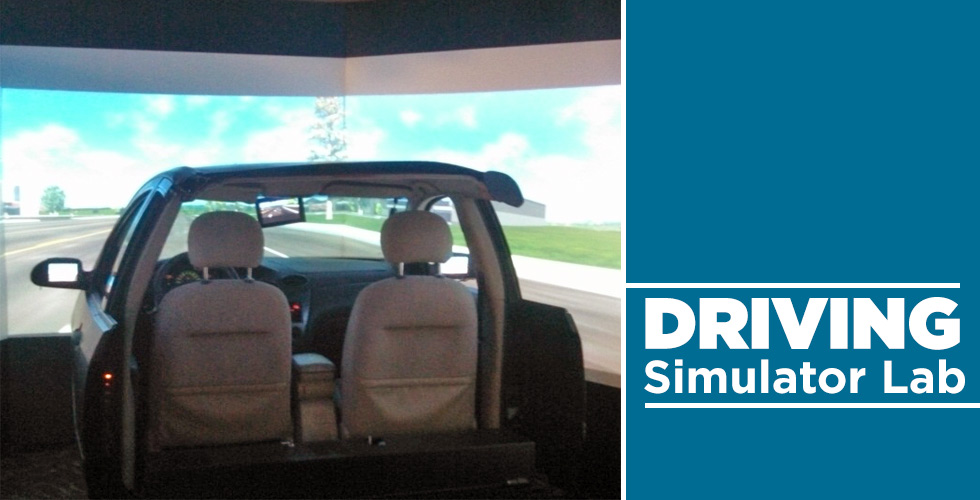“Real world” driving research can be dangerous, and repeatable experiments are difficult to conduct. This is why we use the driving simulator.
UT’s Driver Simulator was established with funding from the Tickle College of Engineering, Department of Civil and Environmental Engineering, and the Southeastern Transportation Center.
The RS-600 model is a fully integrated, high-performance, high-fidelity driving simulation system designed for use in ground vehicle research, training, and assessment applications. The RS-600 hardware is combined with the industry’s most advanced scenario authoring tools to provide an ideal environment for subject matter experts to create purpose-built driving scenarios.
Researchers can create their ideal driving laboratories by using our extensive library of roads, intersections, vehicles, traffic patterns, and landscapes, then scripting specific actions in order to collect the desired data.
Features include:
- Multi-channel audio/visual system with 300-degree wraparound display
- Full-width automobile cab with windshield
- Dash and instrumentation
- Driver and passenger seats
- Center console
- HyperDrive Authoring Suite for flexible scenario creation and customizable designs
- True-to-life driving experience
- High-fidelity vehicle dynamics and handling models
- Collision detection
- Price-to-performance ratio unmatched for a simulator this extensive and powerful
- Sharable data and driving scenarios with other researchers
Areas of research:
- Simulator development, improvement, or validation
- Driving training
- Impaired/distracted/disabled driving behaviors (sub-categories include age, physical, and behavioral validity)
- Driver responses in different traffic circumstances
- Roadway design
- Traffic control tools
- Vehicle design and driver/consumer preference
- Fuel consumption and eco-driving
- Traffic laws
Data captured:
- Speed
- Pedal behavior (accelerator & brake)
- Steering behavior
- Eyeball movement
- Heart rate
Analysis performed:
- Driving behaviors of certain groups of normal drivers (age, gender, education level, training background, profession, etc.)
- Driving behaviors of impaired/distracted/disabled drivers (alcohol, drug, disabilities, texting, calling, etc.)
- Influence of certain driving conditions on driver behaviors (curve, crowd traffic, poor sight distance, night, rain, snow, etc.)
- Effectiveness of roadway improvements and installation or change of new signs/lights (road broadening, adding curbs, center lanes, signal lights, stop/yield signs, upgrade passive control to active control, intelligent parking guide displays, etc.)
- Influence of in-vehicle devices on driver behaviors (radio, music, GPS, etc.)
- Impact of vehicle design on driver behavior or driving safety (manual/automatic transmission, etc.)
Research skills needed:
- Transportation engineering
- Human factors/behaviors
- Social knowledge
- Vehicle control
- Statistics/math
- Computer skill and Programming
